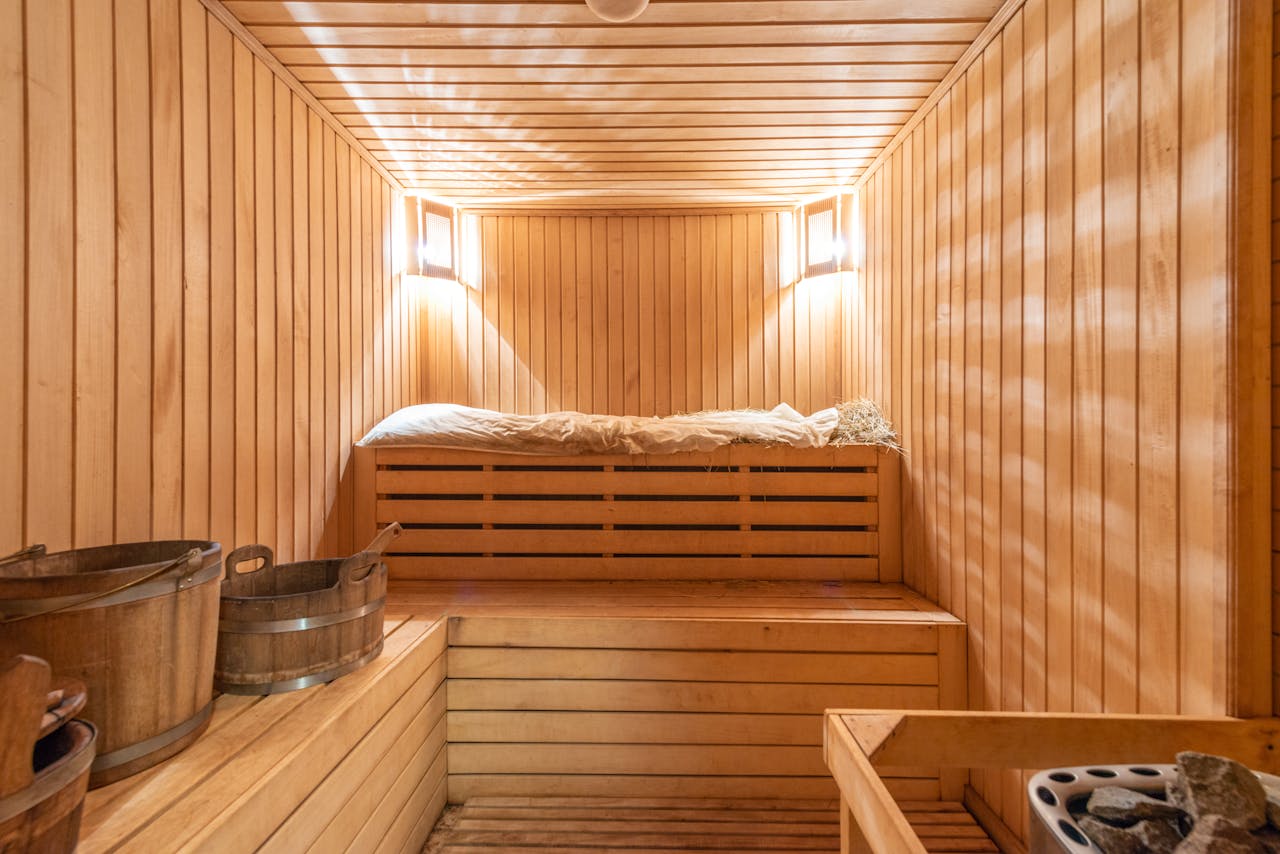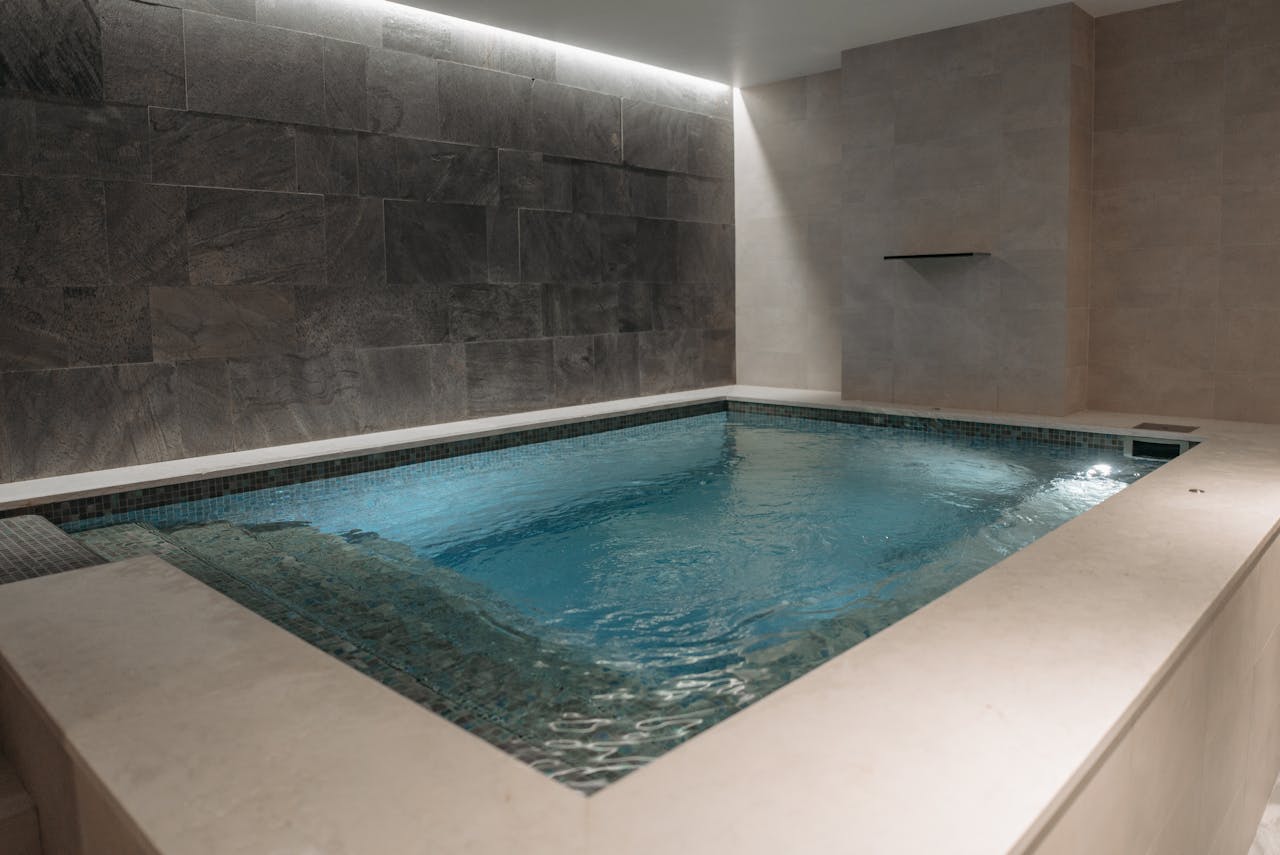Sauna after a workout: 10 myths vs. facts (science-backed truths)
There’s plenty of evidence that supports how sauna use after workouts can aid in muscle recovery.
Using a sauna after a workout is a common ritual among athletes and fitness enthusiasts. While many claims circulate about the benefits of post-workout sauna use, not all are supported by scientific evidence.
Below, we uncover 10 common myths about traditional sauna use after exercise, and reveal facts backed by science.

Source: Pexels
1. Myth: Sauna sessions have no real recovery benefits
Skeptics argue that sauna use for recovery is purely psychological.
Fact: Research indicates that heat therapy, including sauna use, can accelerate certain aspects of muscle recovery.
Heat exposure may enhance muscle regeneration and improve the expression of genes involved in muscle repair and angiogenesis — the process whereby new arteries are formed and are necessary for tissue repair, including muscle recovery.
Some studies also suggest reduced pain and improved recovery markers following sauna or heat therapy. However, results remain inconclusive and open to discussions.
2. Myth: Post-workout sauna means no muscle soreness tomorrow
Some believe that a sauna session immediately after exercise will prevent delayed onset muscle soreness (DOMS).
Fact: DOMS is caused by microscopic muscle damage and inflammation. It peaks between 24 and 72 hours following the performance of an unfamiliar physical activity or intense exercise.
While there is evidence that heat therapy may help alleviate the sensation of stiffness, it cannot prevent DOMS from occurring. Heat therapy may soothe soreness but only temporarily.
3. Myth: A sauna can replace your cool-down or stretching routine
Some individuals skip cool-down exercises, assuming a sauna session is sufficient.
Fact: Saunas should complement, not replace, traditional cool-down routines. Cool-downs are essential for gradually reducing heart rate, aiding circulation, and maintaining flexibility, which a sauna alone cannot achieve. Stretching and light activity remain important for effective recovery.
4. Myth: Saunas flush out toxins and lactic acid from muscles
This belief comes from the visible sweat produced in a sauna, leading many to assume that sweating equates to detoxifying the body and removing lactic acid.
Fact: Sweat consists primarily of water and electrolytes, with only trace amounts of toxins excreted. While studies suggest that certain toxic elements (like lead and cadmium) and organic pollutants can be excreted via sweat, a consensus has yet to be reached.
Lactic acid, on the other hand, is cleared from muscles within about an hour post-exercise, that is, long before soreness kicks in. Thus, it doesn’t cause next-day muscle pain.
5. Myth: “The Longer, The Better”
It is a common misconception that longer or hotter sauna sessions yield better results.
Fact: Excessive sauna use can lead to dehydration, overheating, and even cardiovascular stress. Most experts recommend limiting sessions to 15 up to 20 minutes. Adequate hydration during a sauna session also comes highly recommended.
Overuse can be counterproductive and lead to dizziness or heat exhaustion.

Source: Pexels
6. Myth: Saunas help build muscle (Heat is as good as exercise)
Some claim that the hormonal response to heat can substitute for exercise in building muscle.
Fact: While heat exposure may trigger some cellular pathways involved in muscle growth, it cannot replace the stimulus provided by resistance exercise.
Saunas may enhance recovery but do not directly increase muscle mass or strength without exercising.
7. Myth: Saunas are safe for everyone, no matter what
There is a perception that saunas are universally safe.
Fact: While generally safe for healthy individuals, saunas can pose risks for people with cardiovascular issues, low blood pressure, or certain medical conditions.
It is important to monitor for symptoms like dizziness during a sauna session. If you have underlying health conditions, make sure to consult with your healthcare provider first.
8. Myth: A sauna session drastically speeds up recovery (no rest needed)
Some believe that sauna use can replace the need for rest days.
Fact: While heat therapy may support faster recovery, it does not replace your body’s need for rest. Muscles still require time to repair and adapt after intense exercise.
9. Myth: Infrared saunas are superior to traditional saunas for muscle recovery
Marketing often claims infrared (IR) saunas are better for recovery.
Fact: Current research does not demonstrate a clear advantage of infrared over traditional saunas for muscle recovery. Both types increase core temperature and circulation, with similar effects on biomarkers for recovery markers.
Some studies even suggest that one type may be better for athletes over the other which could be suitable for non-athletes. Traditional saunas may even prevent tissue damage to some degree. However, studies, in general, have been so far limited and findings require further investigation.
Put premium on your personal preference and comfort when choosing which type of sauna to immerse in.
10. Myth: Always use heat on sore muscles (skip the ice)
Some advise always applying heat to sore muscles, ignoring the role of cold therapy.
Fact: Hot therapy, including sauna and hot pack, has been found to reduce pain and swelling when applied within 24 hours after a strenuous physical activity. Research also shows that combining this with cryotherapy or ice massage can further boost recovery and promote relaxation.
Conclusion
There’s plenty of evidence that supports how sauna use after workouts can aid in muscle recovery. However, it becomes more effective when combined with a holistic recovery routine that includes warming up, cooling down, stretching, staying hydrated, and giving your body adequate rest between exercises.
Always listen to your body. Make sure to consult with a health professional if you feel or notice anything out of the ordinary.
Sources:
- Wiriawan O, et al. Effects of infrared sauna, traditional sauna, and warm water immersion on accelerated exercise recoveryand prevention of cell damage: an experimental study. Federación Española de Asociaciones de Docentes de Educación Física. 2024.
- Devlin J, et al. Blood lactate clearance after maximal exercise depends on active recovery intensity. J Sports Med Phys Fitness. 2014 Jun;54(3):271-8.
- Kyoungrae K, et al. Impact of heat therapy on recovery after eccentric exercise in humans. J Applied Physiology. 2019.
- Herbert RD, et al. Stretching to prevent or reduce muscle soreness after exercise. Cochrane Database Syst Rev. 2011 Jul 6;(7):CD004577.
- Cheung K. Delayed onset muscle soreness : treatment strategies and performance factors. Sports Med. 2003;33(2):145-64
- Sears M, Kerr K, Bray. Arsenic, Cadmium, Lead, and Mercury in Sweat: A Systematic Review. R. J Environ Public Health. 2012 Feb 22;2012:184745. doi: 10.1155/2012/184745
- Wang Y, et.al. Effect of cold and heat therapies on pain relief in patients with delayed onset muscle soreness: A network meta-analysis. J Rehabil Med. 2022 Feb 8;54:331. doi: 10.2340/jrm.v53.331
